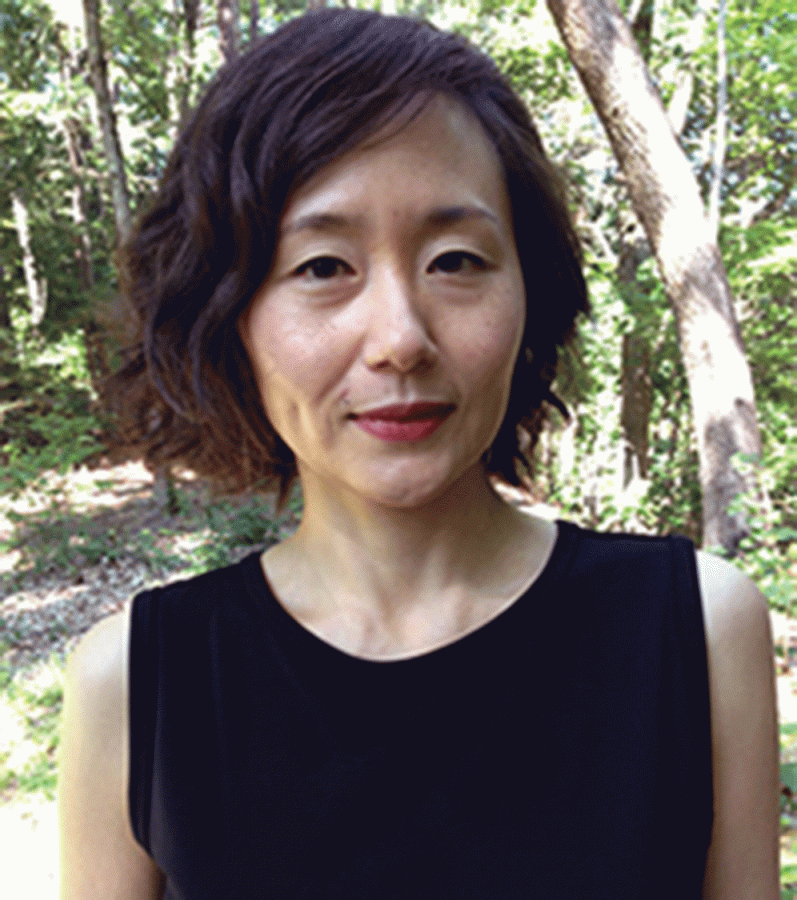Professor Yang Speaks on Cross-Racial Coalitions and POC Movements
UMass Amherst Professor Yang, pictured above, spoke about the history of oppression of immigrants, particularly Asian immigrants, and cross-racial coalitions between Asians and African Americans.
On Wednesday, November 15 Professor of English at the University of Massachusetts Amherst Caroline Yang, gave the presentation “Cross-Racial Coalition and Solidarity: Lessons from People of Color (POC) movements in the 1960s.” Professor Yang began her talk by introducing how Asians have started to immigrate to the United States since the 1960s due to the Immigration and Nationality Act of 1965. This allowed foreigners from regions and countries besides Northern Europe to immigrate into the United States.
Yang segued into showing a Jello commercial from the 1960s. The commercial depicted an Asian baby attempting to eat Jello with chopsticks. However, when the baby is handed a spoon, it was able to successfully eat the food. Yang went on to explain how this advertisement was an example of Asians being subtly assimilated into an American culture.This belief that Asians could and were expected to adopt American values began to surface in the 1960s.
Before further presenting on Asian immigration in the United States after the 1960s, Yang explained its inception in the nineteenth century. She talked about how the first group of Asian immigrants entered the United States in the 1850s. Many of these immigrants were working in gold mines. Yang also discussed how the passage of Asian immigrants into the United States sparked controversy resulting in Asians being subjected to racism, sexism and many other forms of oppression. For example, Yang shared that many of the workers in gold mines were young men. Because of their long hair, many faced discrimination.
Yang further explained the oppression of Asian immigrants by introducing miscegenation laws, which outlawed interracial marriage. In addition, the growing number of Asian workers in America had brought up the stigma that Asians would drive many Americans out of work. This growing controversy amongst Asian immigrants reached further oppression from the American government with the passing of the Page Act in 1875. This prohibited the entry of immigrants into the United States who would be considered unwanted. Many Chinese women were accused of being prostitutes as a result of this law. In order to gain entry into the country, Chinese women would have to prove themselves in court only if they would be accompanied by a white man representing them. The introduction of the Chinese Exclusion Act in 1882 blocked all Chinese immigration. In 1924, the Asian Exclusion act limited the number of immigrants who could enter the United States.
Despite important American historical events such as the Allies’ victory in World War II and major technological innovations during the Cold War, Yang reasoned that the racism in American society during the Cold War was seen as an international embarrassment for the country, with topics such as the decision of Brown v. Board of Education, the Freedom Riders and important civil rights activists like Rosa Parks standing as a testament to the racist sentiment present.
However, Asians were beginning to be depicted as an assimilated and “whitened” race in American culture; Yang demonstrated how the musical Flower Drum Song was an example of Asian assimilation. The term “model minority” exemplified how Asians had been considered in much of American society as an acceptable minority, and Yang criticized the term for stereotyping Asians in a negative manner.
Yang proceeded to analyze how cross-racial coalitions between Asians and African Americans were important in promoting solidarity. Individuals mentioned by Yang such as Richard Aoki and Yuji Kochiyama were significant in promoting equality not only for Asians in American culture, but also for all minorities. Yang explained that the passage of the 1965 Immigration Act was monumental because immigration was no longer exclusionary based on race. Instead, it prioritized reunification between family members previously unable to immigrate and those already settled in the United States as well as foreign workers whose skills were needed in America.
The legacy of cross-racial coalitions during the 1960s Civil Rights Movement impacted many Asians in participating in African American equality movements, though not without controversy. Asian Americans didn’t have as large of an uproar in activism as compared to African Americans in the 1960s Civil Rights Movement. Because of this, people who believed in this “model minority” stereotype applauded Asian Americans for not being as vocal in activism for equality when compared to other races. However, Yang was quick to emphasize that participation in freedom and equality movements amongst different races are important in creating equality.
Yang’s talk was impactful to many students of Colgate. Senior Lücién Reubens reflected on the importance of this talk, sponsered by the Organziation of Asian Sisters in Solidarity (OASIS).
“[Yang brought an] awareness into history that doesn’t see the light it deserves,” Reubens said.
OASIS board member senior Woohee Kim, praised Yang’s presentation.
“It is important to discuss the erasure of the radical history of Asian-American communities’ cross-racial solidarity with POC movements and the importance of cross-racial coalition building in the contexts of US society today,” Kim said.
Yang’s message on cross-racial coalition demonstrates the importance of cooperation between people of different backgrounds, and how unity is the best way to achieve equality for everyone.
Contact Finn Schuemann at fschuemann@colgate.edu.







